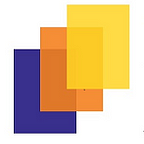How will PACE learn in our philanthropic laboratory?
“PACE is a philanthropic laboratory for funders seeking to maximize their individual and collective impact on democracy and civic life in America. The PACE community achieves this through learning, experimenting, collaborating, and modeling vibrant civic life.”
This is our mission statement and our north star. Being a philanthropic laboratory, in itself, requires some experimentation to embody that identity. We started that experiment in 2020 when we launched this new identity for PACE in line with our new strategic plan. We took further steps as a philanthropic laboratory earlier this year when we defined it, aligned services and programming around it, and centered racial equity within it.
In our next phase as a philanthropic laboratory, we want to experiment with what it means to learn. We put a lot of emphasis on learning — it’s the first role listed in our mission statement after all — and our strategic plan guides us in focusing on learning and experimentation with and for the field of civic philanthropy.
We’ve always considered learning to be a core purpose of our organization and part of our DNA. That said, 18 months into this journey, we have come to uncover a major insight for ourselves about learning: There is a major difference between learning for exploration and learning for purpose.
Learning for exploration casts a broad net and takes us down different avenues based on evolving curiosity, information, and opportunities. It’s about knowing where you’re starting and not necessarily having a destination for where you will land — it’s about seeing what you might find along the way. Learning for purpose casts a more narrow net and sets an intention for the learning path. It’s about knowing where you’re starting and where you think you might land, but always being open to the ways that learning goals can shape the journey itself, in addition to the clarity of the destination.
Another way to think about it…At the end of learning for exploration, you might say “Hey, this is where we landed!” and at the end of learning for purpose, you might say “Hey, this is where we landed, which is different from where we thought we would land in these ways, and here is what we learned about that.” One approach is not better than the other. In fact, there are pros and cons to both methods, and the combination of the two learning approaches are important to an overall learning journey.
As a team working to bring PACE’s philanthropic laboratory to life, we’ve traditionally seen ourselves as learning for exploration and we have very carefully tried not to be prescriptive or directive about what “should” happen at the end of our learning. But we have been sitting with this learning distinction a lot lately while also reflecting on what we exist to do — both as an organization and as a community of grantmakers. This has led us to a new hypothesis we think is worth testing (an experiment!): We think we can increase our goal of producing and contributing learning that is meaningful and actionable to the civic philanthropy field by trading a little learning exploration in service of finding greater learning purpose.
What does this mean, in practical terms? Let’s use a real-life example. PACE committed to a set of learning streams earlier this year: bridging and polarization, civic education and learning, and language of democracy. Each stream serves as an anchor theme to organize a variety of activities that allow us — as a community — to elevate learning and experimentation around them. But these topics are broad, complex, and somewhat contentious in the current climate and context. Why we pull on one thread inside a stream versus another can feel a bit arbitrary. If we set out with a “learning for exploration” approach to polarization, for example, who knows where we would end up — or when! Instead, by taking a “learning for purpose” approach, we can cast a more narrow net into these broad topics and get to learnings that might be meaningful and actionable for those working in civic philanthropy. That is our goal.
The “purpose” within each area and topic we set out to learn will be different each time, and we are building the learning agenda in a way that deepens our understanding of democracy’s “wicked problems.” The way we see it, underneath our three learning streams is a set of “wicked problems” facing our democracy. They’re not simple problems. They’re big. They’re complex. They involve competing underlying values, paradoxes, and tradeoffs. They don’t have easy solutions. They are “the elephants in the room that have gotten too big to know where to begin.” We see our contribution as understanding the gaps in the solution sets for these wicked problems — civic education, faith, and bridge-building — that might help.
It is through this lens that we will build programming to bring PACE’s next phase of learning and experimentation to life. We are working hard to develop the right programming to make meaningful contributions, which might take the shape of newly developed resources, tools, and filters for funders; immersive Learning Labs or discussion series on particular topics; new research commissions and pooled funds launched. We invite you to continue along this learning journey with PACE as we learn with purpose.
